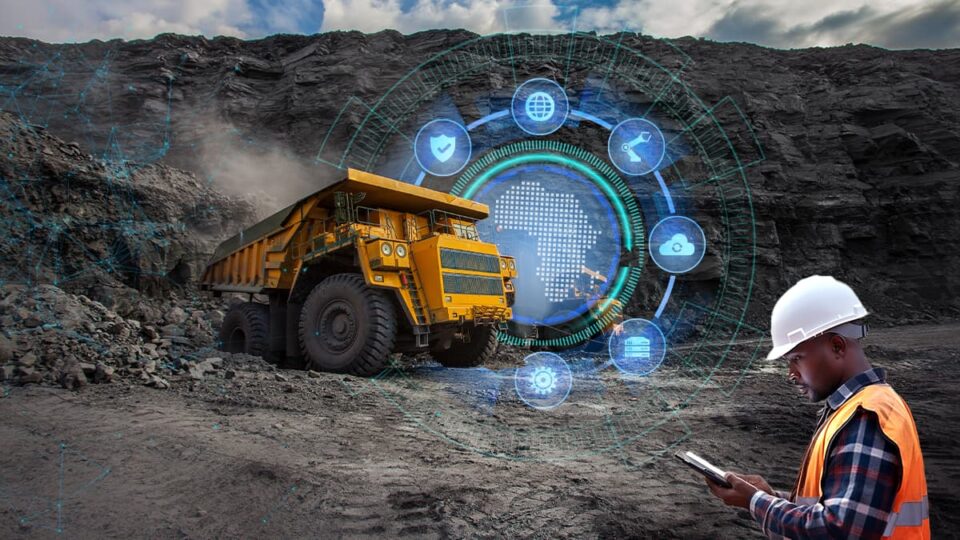Amid the challenges of loadshedding, logistical constraints, and volatile commodity prices, South Africa’s mining-focused manufacturers and equipment suppliers see ongoing innovation, particularly through digitalisation and artificial intelligence (AI), as vital for their survival and growth.
Lehlohonolo Molloyi, CEO of Mining Equipment Manufacturers of South Africa (Memsa), describes local manufacturers as “resilient” and responsive to sector needs, emphasizing the role of innovation in improving the mining sector’s safety record. “The stats speak for themselves, if one looks at how the numbers have declined in terms of fatalities in the mining industry,” Molloyi stated during a Creamer Media webinar on mining innovation. He highlighted the significant improvement in mine safety over the past years.
Despite a setback in mining-related fatalities in 2023, the Minerals Council South Africa noted significant progress towards zero harm, with a 42% decline in fatalities to 49 in 2022 from 84 in 2014. This progress, achieved through collaboration among key stakeholders like the Mine Health and Safety Council, the Department of Mineral Resources and Energy (DMRE), and mining sector manufacturers, includes the introduction of advanced technologies and innovations.
Between 2014 and 2022, fatalities from falls-of-ground and transportation-and-mining, the two leading causes of deaths and injuries, fell by 83% and 43%, respectively. Injuries declined by 19%.
However, the path for innovation and mine-focused manufacturing has not been smooth. The sector has demonstrated resilience despite challenging periods of unsupportive commodity prices and investment climates. Molloyi pointed out that Memsa’s membership and the sector’s exports have increased over the years, illustrating this resilience.
The Africa Continental Free Trade Area has also created new opportunities across Africa for local manufacturers, where collaboration is essential for business sustainability and growth. Eric Bruggeman, CEO of the South African Capital Equipment Export Council, echoed the importance of collaboration to overcome challenges and showcase local initiatives, emphasizing South Africa’s success in this area.
Thomas Holtz, CEO of Multotec Group, agreed but noted that the local manufacturing sector still struggles to reach its full potential both domestically and abroad. “South Africans are getting a bit tired of being resilient,” Holtz remarked, pointing out challenges such as deindustrialisation and loadshedding. Despite this, Multotec has embraced the challenge, with innovations like the UX7 spiral for fine material recovery and a composite rubber steel integrated liner for mill mining applications.
ENTER ARTIFICIAL INTELLIGENCE
Digitalisation and AI are increasingly impacting the local mining industry. Vikesh Chiba, Epiroc’s business line manager for digital solutions, argued that mines risk falling behind if they do not embrace digitalisation. Digitalisation offers faster, more accurate data collection, reducing human error and speeding up data consolidation.
Epiroc’s autonomous solutions for drilling, loading, and haulage use complex AI algorithms to enable machines to operate and communicate in a coordinated manner, maximizing their usage. “From an AI perspective, I feel we are really only scratching the surface of what is possible in South Africa,” Chiba noted, highlighting opportunities for greater AI integration in the industry.
While autonomous surface drills are operational in South Africa, there is still work needed to achieve fully autonomous systems, particularly in surface haulage and underground mining. AI is routinely used in design planning and scheduling platforms, which simulate mining operations and predict outcomes. However, there is still significant potential for AI-related hardware, like AI cameras, to increase.
NEW APPLICATIONS
Epiroc has made strategic acquisitions in mining technology, enhancing its digital and automation capabilities with products like autonomous controlled machines and real-time situational awareness tools. Innovations like the Blast Support real-time location tracking system for surface mining improve safety by visualizing the location of people and assets during blasting.
In the realm of collision prevention systems (CPS) and collision avoidance systems (CAS), Epiroc’s Titan CxD system combines various sensor technologies, significantly enhancing the detection of people and vehicles. Epiroc is also collaborating with the University of Pretoria on these technologies, highlighting the ongoing developments in this space.
Chiba emphasized the streamlined nature of digitisation, with information being sent to machines and operators in near real time, enhancing productivity and safety. Solutions integrating various platforms are emerging, offering tailored technology plug-ins for different customer needs.
Kevin O’Neill, technical director at Simera Trace, noted the importance of integrated software platforms for ore tracing throughout different mining phases, ensuring real-time control and visibility across silos.
The consensus among webinar participants was that advancing South Africa’s mining industry requires greater collaboration to develop creative solutions that enhance safety and sustainability.



